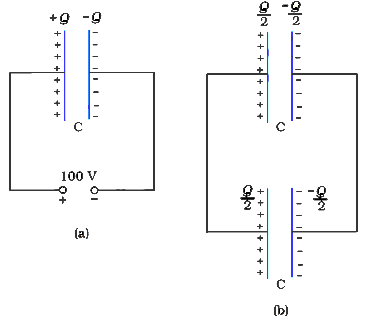Figure 2.32 shows a charge array known as an electric quadrupole. For a point on the axis of the quadrupole, obtain the dependence of potential on r for r/a>>1 , and contrast your results with that due to an electric dipole, and an electric monopole (i.e., a single charge).
 Solution in Gujrati
Solution in Gujrati
For large r, quadrupole potential goes like 1/r3, dipole potential goes like 1/r2 , monopole potential goes like 1/r.
Topper's Solved these Questions
- BOOK - NCERT GUJARATICHAPTER - ELECTROSTATIC POTENTIAL AND CAPACITANCE EXERCISE - ADDITIONAL EXERCISES1videos
ELECTROSTATIC POTENTIAL AND CAPACITANCE
- BOOK - NCERT GUJARATICHAPTER - ELECTROMAGNETIC WAVESEXERCISE - ADDITIONAL EXERCISES5videos
ELECTROMAGNETIC WAVES
- BOOK - NCERT GUJARATICHAPTER - MAGNETISM AND MATTEREXERCISE - Additional Exercises19videos
MAGNETISM AND MATTER
Similar Questions
A charge of 8 mC is located at the origin. Calculate the work done in taking a small charge of −2×10−9 C from a point P (0, 0, 3 cm) to a point Q (0, 4 cm, 0), via a point R (0, 6 cm, 9 cm)
04:12View SolutionSuppose that the electric field part of an electromagnetic wave in vacuum is →E={(3.1N/C)cos[(1.8rad/m)y+(5.4×106rad/s)]}ˆi
What is the direction of propagation ?View SolutionWhy does a paramagnetic sample display greater magnetisation (for the same magnetising field) when cooled?
06:58View SolutionFig shows a charge array known as an 'electric quadrupole'. For a point on the axis of the quadrupole, obtain the dependence of potential on r for r/a>>1, and contract your results with that due to an electric dipole and an electric monopole (i.e, a single charge).
 06:41View Solution
06:41View SolutionFigure shows a charge array known as an "electric quadrupole". For a point on the axis of the quadruple, the dependence of potential on r(r/agt gt1) is 1/(r^(n)) . Find n ?
05:59View Solutionनीचे दिए गए चित्र 2.32 में के आवेश विन्यास जिसे विद्युत चतुर्ध्रुवी कहा जाता है, दर्शाया गया है । चतुर्ध्रुवी के अक्ष पर स्थित किसी बिंदु के लिए r पर विभव कि निर्भरता प्राप्त कीजिए जहाँ r/a>>1 । अपने परिणाम कि तुलना एक विद्युत द्विध्रुत व विद्युत एकल ध्रुव (अर्थात किसी एकल आवेश) के लिए प्राप्त परिणामों से कीजिए ।
 View Solution
View Solutionनिम्न चित्र में एक आवेश विन्यास जिसे विद्युत चतुर्ध्रुवी कहा जाता है, दर्शाया गया है। चतुर्ध्रुवी के अक्ष पर स्थित किसी बिंदु के लिए r पर विभव की निर्भरता प्राप्त कीजिए जहाँ r/a>>1 अपने परिणाम की तुलना एक विद्युत द्विध्रुव व विद्युत एकल ध्रुव (अर्थात किसी एकल आवेश) के लिए प्राप्त परिणामो से कीजिए।
 View Solution
View Solutionचित्र में प्रदर्शित चार आवेशों का संयुक्त निकाय विधुत-चतुध्रुव (electric quadrupole) कहा जाता है । निकाय के अक्ष पर केंद्र से r दूरी पर स्थित बिंदु P पर विभव का व्यंजक प्राप्त करें , यदि ar<<1. प्राप्त परिणाम की तुलना एक विधुत-द्विध्रुव (electric dipole) एवं विधुत एकल ध्रुव (electric monopole) के कारण विभव से करें ।
 07:22View Solution
07:22View SolutionElectric potential (ϕ) of a quadrupole varies with distance 'r' on its axis as :-
07:15View SolutionThe figure given below shows a charge array known as an 'electric quadrupole'. For a point on the axis of the quadrupole, obtain the dependence of potential on r for (r )/(a) gt gt 1 . Contrast your result with that due to an electric dipole and an electric monopole (i.e. a single charge).
07:44View SolutionDeduce an expression for the electric potential due to an electric dipole at any point on its axis. Mention one contrasting feature of electric potential of a dipole at a point as compared to that due to a single charge.
03:05View SolutionFigure shows a charge array known as an electric quadrupole. For a point on the axis of the quadrupole, obtain the dependence of potential on 'r' for r/a gt gt 1 , and contrast your result with that due to an electric dipole, and an electric monopole (i.e, a single charge)
View SolutionFigure 2.32 shows a charge array known as an electric quadrupole. For a point on the axis of the quadrupole, obtain the dependence of potential on r for r/a>>1 , and contrast your results with that due to an electric dipole, and an electric monopole (i.e., a single charge).
 View Solution
View SolutionFig shows a charge array known as an 'electric quadrupole'. For a point on the axis of the quadrupole, obtain the dependence of potential on r for r//a gtgt 1 , and contract your results with that due to an electric dipole and an electric monopole (i.e, a single charge).
05:39View SolutionFigure shows a charge array known as an 'electric quadrupole'. For a point on the axis of the quadrupole, obtain the dependence of potential on r for ra>>1, and contrast your results with that due to an electric dipole, and an electric monopole (i.e., a single charge).
 04:16View Solution
04:16View Solution

